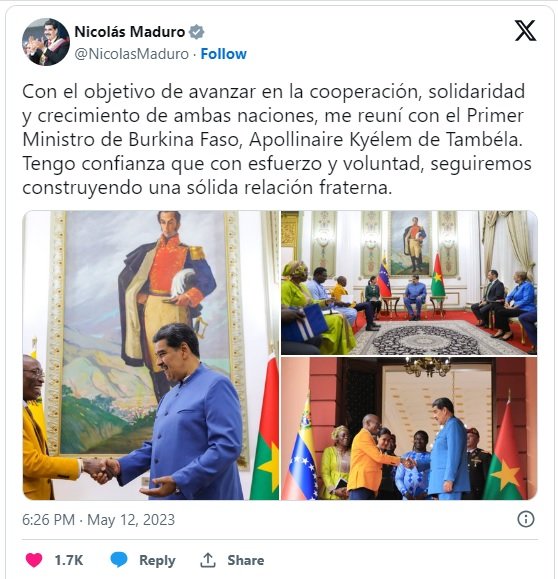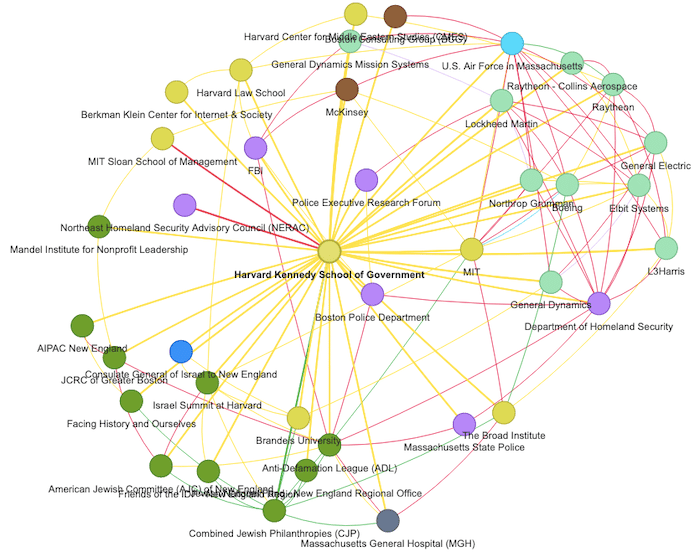By Felix Diefenhardt
Republished from Marx & Philosophy.
Maurizio Lazzarato’s last book in 2021, Capital Hates Everyone: Fascism of Revolution, ended with a call to put revolution back at the center of left theory and practice and a promise that readers could expect a sequel to his 2016 collaboration with Éric Alliez, Wars and Capital. In this second volume, the authors would provide a counter-history of revolutionary struggle as well as theoretical weapons for revolutionaries in the present. Whether or not this book is still to materialize is anyone’s guess. However, Lazzarato’s latest addition to the Semiotext(e) interventions series, The Intolerable Present, The Urgency of Revolution, reads very much like a single-authored attempt to fulfill that promise. The resulting book sits awkwardly between a polemical call to arms, like Capital Hates Everyone and a dense theoretical treatise in the style of Wars and Capital. As such, it contains some provocative sketches of a counter-history of the present that emphasizes strategic confrontations between revolutionary and counter-revolutionary forces, as well as the foundations of what one might call a theory of revolutionary intersectionality. However, a lack of historical detail and some conceptual fuzziness prevent the book from making the concise contribution to revolutionary theory and strategy that readers were promised.
Conveniently, Lazzarato formulates the problem he is trying to tackle alongside the basic points of his argument in ten hypotheses provided in the introduction. His basic proposition is as follows: ‘For better or worse, what the world is now, we owe it to revolutions.’ (404) Yet, after the last flare-up of revolutionary struggle in the second half of the twentieth century and the neoliberal counter-revolution, the only force ‘capable of planning a long-term strategy and of organizing victorious attacks’ (286) is capital. In the absence of revolutionary ruptures, the left has lost its capacity for strategic initiative, since even the most minute reforms of capitalism are only successful under the threat of revolution. This has left it completely at the mercy of capitalist initiative, forced into the position of passive witness to the erosion of its gains. The only way to reverse this trend, according to Lazzarato, is to rekindle revolutionary struggle. He is careful not to propose any concrete strategies and practices to revolutionaries, instead setting out to analyze the historical role of revolutions, why they disappeared and what the current conditions are for their reinvigoration.
In a sense, this project can be seen to (re-)embrace a classic premise of Italian Operaismo: a political analysis of capitalist society in which 1.) capitalist development is subordinated to working class initiative, its mediation by the state and the response of capital, and 2.) this class struggle is premised in the working class’ potential for effecting a non-dialectical ‘frontal clash’ between opposing forces (workers and capital). However, Lazzarato augments this premise on two important ways.
First, he qualifies the historical significance of working class initiative, arguing that it is only possible when revolutionary rupture is on the table. ‘Without revolution’, he argues, ‘workers are simply a component of capital.’ (158) Second, he decenters working class struggle from his framework, arguing instead for ‘plural struggles of classes’ (14), including struggles of women of racialized and colonized subjects. For Lazzarato, these struggles cannot be subsumed to one hegemonic struggle and he blames the failure of past revolutionary movements to transversally connect these struggles in no small part for the failure of revolution in the twentieth century. This insistence on the multiplicity of class (struggles) must be understood in terms of Lazzarato’s political analysis of capitalism and the short revolutionary history he provides on that basis. He understands capital not as an economic process of valorization through the exploitation of abstract labor. Instead, he proposes a ‘capital seen as a political-economic process with a strategy that composes and decomposes the different modes of production […] relationships of power.’ (424) For Lazzarato, while capital appropriates the surplus value produced by formally free workers, it also appropriates the free reproductive labor of women and the hyper-exploited and sometimes even unpaid labor of workers in the periphery. Without these heterogeneous modes of appropriation in patriarchal societies and along supply chains, profits would surely collapse. Importantly, for Lazzarato, these different modes of appropriation correspond to different modes of domination. While workers are subject to an abstract economic domination, the domination of women and racialized subjects in the periphery are, for Lazzarato, much more direct and personal, and, therefore, appear as archaisms in orthodox Marxist theory.
This decidedly messy portrayal of capitalism is provocative because leaves aside the orthodox mode of Marxist analysis – trying to lay bare the abstract logic behind the appearances in capitalist society – and is instead developed from an acute sensitivity of and engagement with concrete struggles. Lazzarato emphasizes the constitutive role of colonization, racist and sexist domination in capitalism precisely because, historically those subjected to these archaisms waged the most effective struggles in the twentieth century. ‘Throughout the twentieth century’, he writes, the ‘underdeveloped’ periphery ‘would be successful in its revolutions, while after 1968, the most significant innovations in theory would come from the different feminist movements.’ (13) From this premise, Lazzarato continues to assemble a literature of intersectional revolutionary struggle in the central chapters of the book. His analysis of the struggle of the colonized draws on decolonial classics by Franz Fanon and Aimé Césaire. To theorize revolutionary feminist struggles he provides an extensive reread of so-called materialist feminism. Lazzarato does not really add that much to these strains of literature, but provides a comprehensive overview over their main proponents and a convincing plea for their significance. What makes these thinkers so relevant for Lazzarato’s project is their insistence on a non-dialectical struggle that seeks not to sublate but to abolish the antagonistic duality between oppressor and oppressed in the here and now.
Lazzarato pits this presentist understanding of revolutionary rupture against whiggish theories of revolution that presuppose a certain level of development or urge for a rectifying development after political revolution, postponing a social revolution. Accordingly the history of capitalist development he sketches out in the first leg of the book is not one of stagist development but rather one of ruptures and strategic antagonisms. This history starts with the Paris Commune. In response to this revolutionary rupture, he argues, capital developed a three-pronged strategy of financialization, globalization (imperialism) and monopolization, which figures as somewhat of a constant in Lazzarato’s retelling. In effect through these three strategies capital and the state were able to consolidate power over workers and prop up profit rates. Importantly, financialization and globalization allowed for the inclusion through exclusion of large swaths of the global population that are included in capital’s valorization process precisely because they are excluded from formalities of abstract labor. Lazzarato includes in this category hyper-exploited sweatshop workers in China, micro-financially indebted farmers in Kenya and slum dwellers working in the informal sector all over the world. We will return to the heterogeneity of those included in this category later. Thus, this tripartite strategy operated through the very heterogeneities of appropriation and domination, intensifying them and reconfiguring the terrain for revolutionary struggle. This terrain gives rise to the revolutionary dynamic encapsulated by Lazzarato: successful revolutions (decolonial, anti-capitalist, etc.) in the periphery and social and labor unrest in the core. Accordingly, when the neoliberal counterrevolution seized the capitalist core, it had first re-subjugated the periphery by financial and military means (Chile being the paradigmatic case). For Lazzarato, the world revolution failed because capital adopted a global strategy while revolutionaries were unable to connect decolonial, feminist and class struggles on a global scale.
Post neoliberalism, the present conditions present themselves to Lazzarato as follows: revolution no longer plays a role in politics. Instead, we have witnessed a series of popular revolts, most of which have ended with the state and reactionary forces regaining strength. At the same time however, core and periphery have lost their geographical specificity. Instead, nation-states in the global north and south now contain internal cores and internal peripheries. Because this leads to zones of included exclusion co-existing with economic centers in nation-states, Lazzarato diagnoses an ‘internal colonization’. Recent events like the George Floyd uprisings are therefore increasingly led by lumpenized subjects in the global north. Lazzarato’s implicit hope seems to be that this geographical proximity between formal workers and internally colonized subjects might enable the kind of transversal coordination that was not possible in the twentieth century.
Lazzarato’s theorization of contemporary potentials for rupture thus depends to a considerable extent on the validity of this historical sketch. For this reason, it is rather problematic that he omits any historical detail and contextualization of his claims. Readers will be hard pressed to find concrete examples of the tripartite strategy Lazzarato identifies in action. This gives rise to the impression that he seems to be assuming a level of convergence and coordination between the respective fractions of the capitalist class (finance capital, industrial capital, etc.) that is rather unrealistic. Moreover, his claim that twentieth century revolutionaries did not attempt to link struggles in the periphery and the core is simply not true. However, the most explicit attempts to bring the decolonial war home to the capitalist core took the form of the terrorist violence of the Red Army Fraction or the Red Brigades. By omitting this part of revolutionary history, Lazzarato saves himself the trouble of explaining how his theory can be distinguished from – and thus prevented from falling back into – the crude Third Worldism of these groups.
Finally, referring to his framework of capital as a strategic integration of different modes of appropriation in which one cannot be privileged over the other, Lazzarato repeatedly refers to subjects in the (internal) periphery as ‘unpaid and underpaid workers’. In this rather fuzzy category Lazzarato lumps together hyper-exploited and unpaid workers, that is, enslaved, alongside those who are not even exploited but eke out a living in the informal economy. Even from Lazzarato’s own perspective, this should be problematic, since the mode of domination to which a precarious hyper-exploited worker is subjected is arguably completely different from that of an enslaved subject. This becomes even more problematic when Lazzarato turns to his hypothesis of internal colonization, insofar as he seems to imply that the increasing precarization and impoverishment of the white working class in the global north moves these subjects away from the category of abstract labor toward the state of internally colonized subjects. As he writes, ‘[t]he George Floyd uprising demonstrated that internal colonization not only affects Blacks as always, but also a large majority of whites.’ (405) Lazzarato does not give a clear account of what exactly the internal colonization of white subjects looks like. And it seems as if it would be a difficult argument to make, since he has equated the position of colonized and racialized subjects with direct and personal appropriation and domination and that of the worker with abstract domination and the appropriation of surplus value. The deterioration of the working conditions and softening the legal protection of the latter does not change anything with regards to this mode of domination. It just makes it less bearable. Since a lot of Lazzarato’s hopes for a viability of revolutionary movements today hinges on this hypothesis of internal colonization and an underdeveloped history, his latest intervention is provocative and urgent, but rather limited as a theoretical framework for political action and analysis. Readers might get the most out of The Intolerable Present, the Urgency of Revolution by reading it in conjunction with 2016’s Wars and Capital, where both the historical and theoretical work has more depth and breadth.










